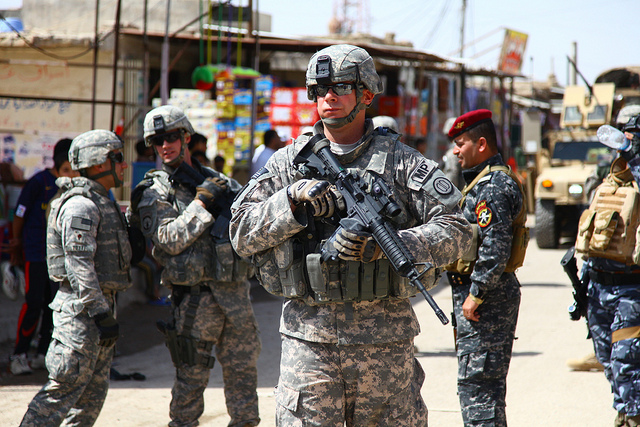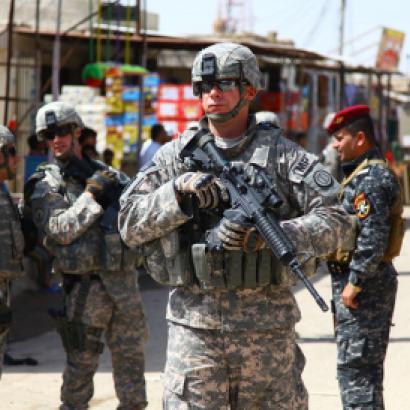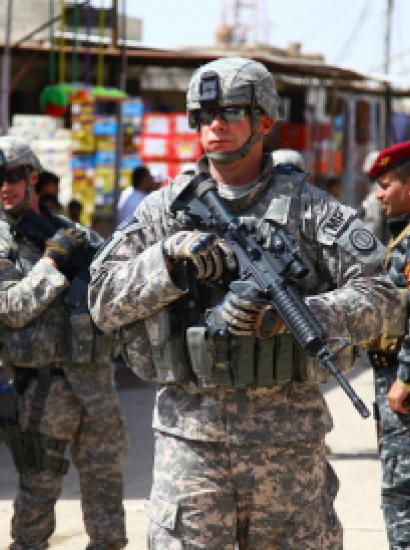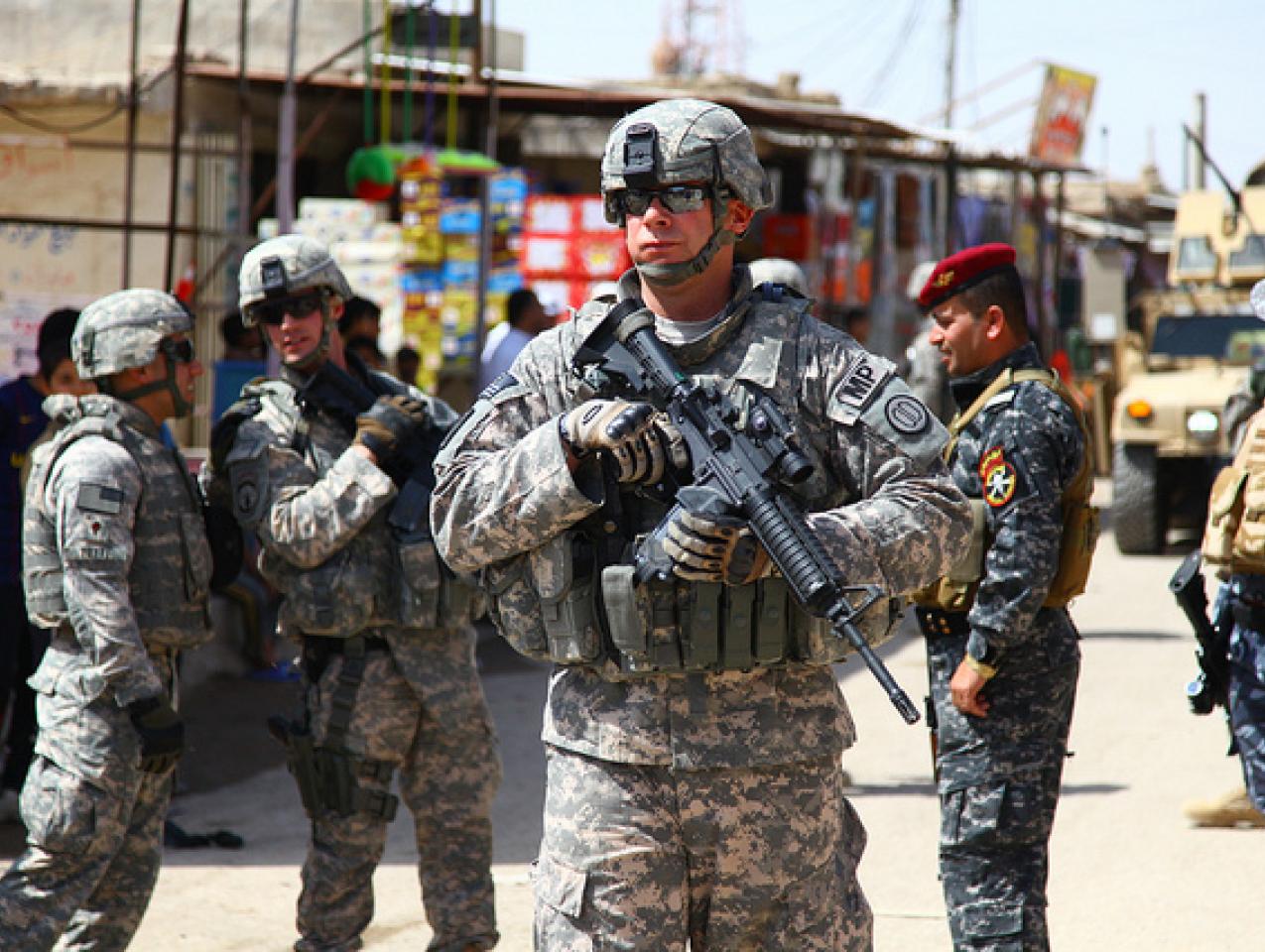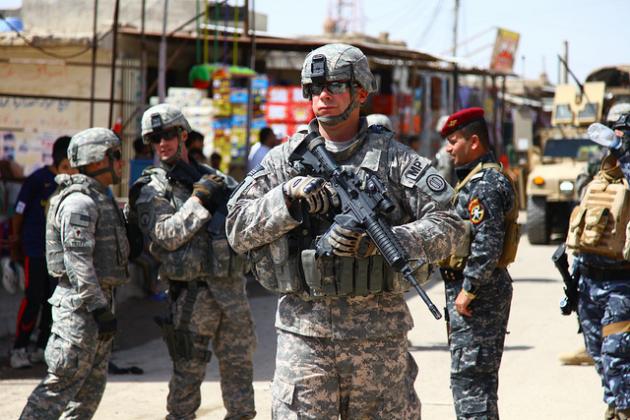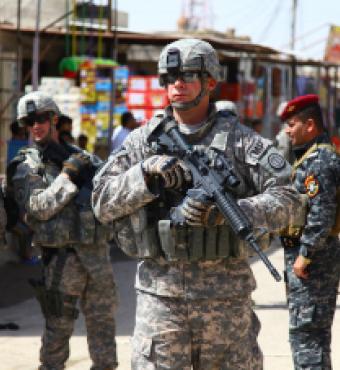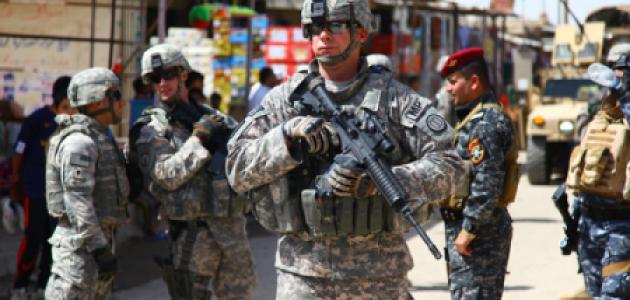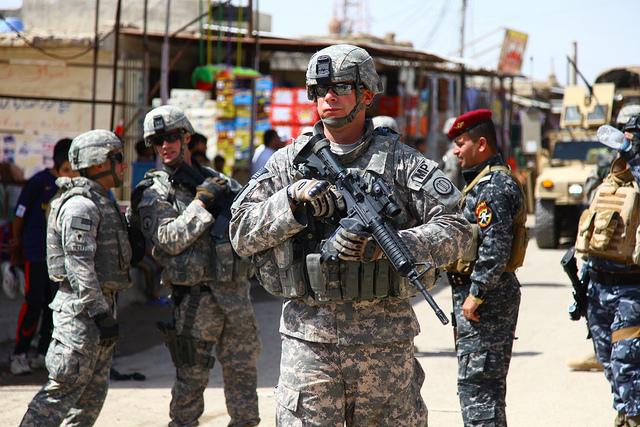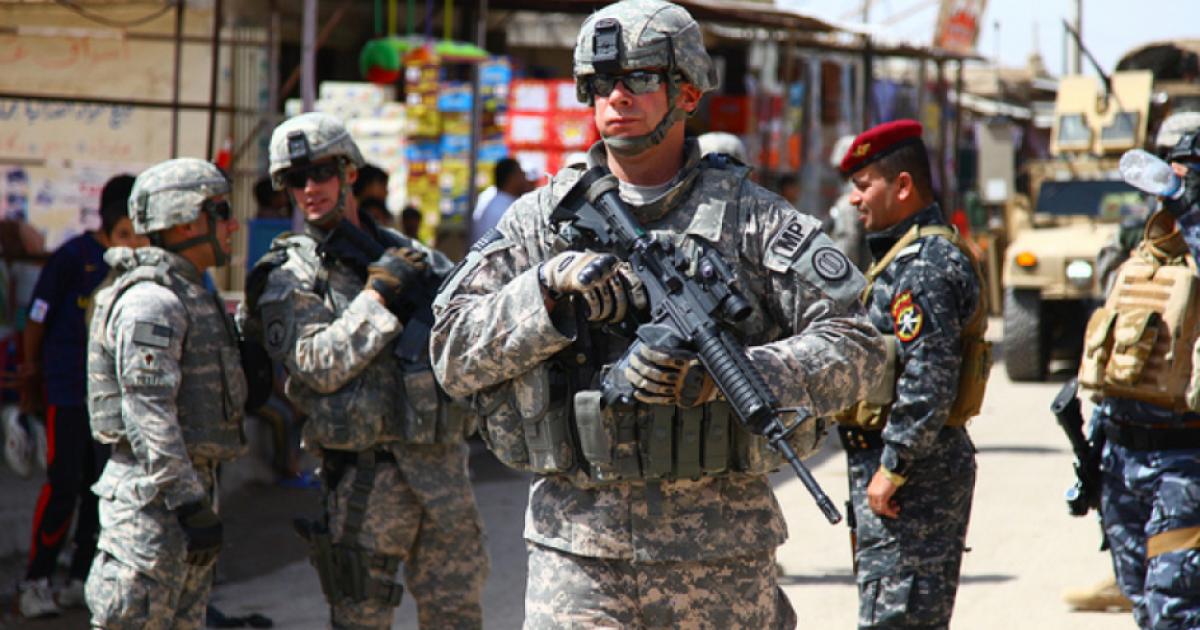- History
Editor's note: This article is part of a Hoover series of essays on military history.
Strategic defeat often results from an accumulation of tactical failures. Repeated battlefield setbacks can destroy an adversary’s capabilities, as befell Napoleonic France, or its will, as befell Britain in the American War of Independence. In such cases, military organizations may deserve at least some of the blame for the strategic loss, because in most countries the military leadership bears primary responsibility for training, equipping, and commanding armed forces, functions that are fundamental to tactical effectiveness. Military strategy, by contrast, is often set by civilian leaders, and in the case of the United States it is the statutory prerogative of the civilian commander in chief.
When a country enjoys tactical military success as consistently as the United States, responsibility for strategic success must rest primarily with those who make strategy. The American military could be held culpable for recent strategic setbacks were it highly influential in the crafting of strategy. But its influence under the Bush administration was much more limited, and under the Obama administration its strategic advice has largely been ignored.
A review of America’s military interventions since 2001 reveals that seven broad errors account for America’s inability to turn tactical successes into strategic victories. These errors are described below. In every instance, the error was the direct result of presidential decisions on policy or strategy. Some of those decisions ran in direct contradiction of the military’s advice. The military can be faulted for some significant tactical errors, such as ignorance of counterinsurgency in the early years of the Iraq war and excessive reliance on population-centric counterinsurgency doctrine in the middle years of the Afghan war. But the military eventually corrected its major tactical problems, and none of those problems thwarted strategic success.
Incompetence, in the form of bad judgment and disorganization, contributed heavily to the mistakes of both the Bush and Obama administrations. Reliance on flawed theories, which could be attributed to ideological fervor as well as incompetence, also hurt both administrations. Theories on democratization made Bush and Obama overly optimistic about the prospects for intervention in certain countries. President Obama’s adherence to McGovernite ideology fueled an undue aversion to the use of American military power. In addition, preoccupation with domestic politics and personal popularity guided many of Obama’s ill-fated strategic decisions.
1. Excessive Confidence in Democratization
President George W. Bush and key advisers believed that the hostile governments of Afghanistan and Iraq could be replaced with democratic regimes capable of maintaining domestic order and suppressing extremists on their own. For this reason, they did not assign American troops to the invasions in the numbers required for countering insurgents after regime change and did not plan to keep American troops for more than a short period beyond the formation of new governments. This thinking reflected both a lack of understanding of the factions in those countries and an underestimation of the difficulties of establishing liberal democracy in societies with authoritarian traditions. The short-term strategic successes of regime change that America’s tactical successes made possible in Afghanistan and Iraq evaporated as the new democratic governments failed to take the military and political actions required for stabilization.
Obama engineered the overthrow of Libya’s Moammar Gadhafi based on the same misplaced confidence in democratization. Unlike Bush, he pursued regime change without deploying US ground forces, arguing that American forces would be an impediment to Libya’s stability and political development. Libya’s democratic experiment yielded even poorer results, as anti-democratic forces dismembered the democratic government in less than three years, ushering in chaos and violence.
2. Poor Selection of Local Allies
Bush and Obama erred repeatedly in their choices of allies within contested societies, to include many of the people who led the newly installed democracies mentioned above. Had the United States chosen different individuals in these cases, its experiments in democratization might have fared better. As history has shown in such places as Botswana, Chile, and Kosovo, leadership quality is often a critical factor in the viability of nascent democracies.
In Iraq, the Bush administration excluded Baathists and military officers from the postwar government, casting its lot instead with exiles, outcasts, and Shiite politicians, who turned out to be less virtuous than anticipated. The new Iraqi government lacked the governors, police chiefs, and military officers to cope with the insurgents, many of whom were former Baathists or military officers. Because of their ineffectiveness, the US military had to step into the breach.
Subsequent decisions to allow former Baathists and military officers back into the government contributed to the stabilization of the country in 2007 and 2008. Prime Minister Nouri al-Maliki, a highly sectarian Shiite whom Obama kept in power following the disputed 2010 elections, undid the progress by removing many of those same individuals when the US military withdrew from Iraq. He thereby weakened the government’s security forces and rekindled Sunni antagonism toward the central government, leading to the rise of the Islamic State.
In Afghanistan, the Bush administration chose to empower Hamid Karzai, based upon exaggerated estimates of his leadership skills. Bestowing key government posts on favored tribes and persons, Karzai gave free rein to malign actors whose predatory behavior drove Afghans into the arms of the insurgents. By the time he left office, he was almost universally derided for incompetence and corruption.
In Libya, the Obama administration backed rebels about whom it knew very little, and who were ultimately too weak to establish governmental control over the country. Abed Rabbo Mansour Hadi, whom Obama pushed into power in Yemen, proved incapable of holding off the Houthi insurgents. The Syrian rebels underwritten by the Obama administration have been utterly ineffectual, and some have defected to extremist groups.
3. Haste in Counterinsurgency
From late 2003 to late 2006, the Bush administration tried to hurry up the counterinsurgency in Iraq, in the belief that prolonged American involvement would alienate xenophobic Iraqis and dissipate American public support for the war. To extricate the United States quickly, Bush ordered the rapid expansion and fielding of Iraqi forces. But the Iraqi forces kept getting crushed by the insurgents, a problem ultimately traced to poor leadership, which was itself the result of abbreviated training and politicization of appointments. The US government ultimately rectified the situation by allowing officers from the former regime into the Iraqi national security forces and by compelling the Iraqi government to appoint leaders based on merit.
Afghanistan, by contrast, did not have a comparable body of experienced officers upon whom the government could call when security deteriorated. Ravaged by decades of civil war, Afghanistan had seen many of its talented and dedicated leaders perish, and disintegration of central governance in the 1990s had left a generation of Afghans devoid of professional soldiers and policemen. Creating a new, professional officer corps in Afghanistan would take at least ten years of training and education. Early on, the Bush administration undertook a serious effort to build an Afghan army officer corps, but it entrusted the building of the Afghan police leadership to the German government, which trained far too few police officers. Afghan police leadership development did not begin in a serious fashion until the United States took on a large role, starting in 2008. Building capable police forces, therefore, was likely to take until 2018 or later.
Obama decided early in his administration to intensify counterinsurgency in Afghanistan in the hope that short-term gains would allow the United States to turn the war over to the Afghans in a few years, which was politically appealing to Obama because of the high costs of American involvement and the unpopularity of the war among his political supporters. To permit rapid enlargement of the Afghan forces, the United States boosted funding and the number of American trainers. It also lowered recruiting standards for the Afghan army and police and shortened training, with the result that the enlarged Afghan forces suffered from the indiscipline and incompetence common to ill-led security units.
In 2011, Obama curtailed America’s counterinsurgency effort in Afghanistan by cancelling large-scale clearing operations in eastern Afghanistan. The lack of a sustained counterinsurgency campaign allowed the insurgents to recruit replacements across the east. Those insurgents now provide safe haven for other terrorists and pose an existential threat to the Afghan government.
4. Over-reliance on Surgical Strikes
From 2002 to 2008, the small US military forces in Afghanistan relied primarily on raids and ambushes to thwart Afghan insurgents and their al-Qaeda allies. Although the Americans inflicted heavy losses, they could not keep the insurgents from gaining in strength. The subsiding of violence in Iraq in 2008 permitted the shifting of US military resources to Afghanistan, prompting recommendations from the military leadership—including surgical-strike pioneer General Stanley McChrystal—to shift from surgical strikes to troop-intensive counterinsurgency. In late 2009, Obama consented to counterinsurgency and the additional troops it required.
Obama’s cancellation of counterinsurgency operations in eastern Afghanistan in 2011 necessitated a move back toward a strategy reliant on surgical strikes. Although drones and raids inflicted heavy losses, they failed to hold the enemy at bay in eastern Afghanistan. With the withdrawal of American troops, the security situation deteriorated to such a degree that in early 2014 the CIA had to shut down its outlying Afghan bases and its secret army of Afghan counterterrorists—assets that were critical to surgical strikes.
In 2008, President Bush began precision drone strikes in Pakistan against al-Qaeda and other extremists. The Obama administration increased the rate of strikes, but by then al-Qaeda had taken effective countermeasures, to include the relocation of leaders into urban areas where drone strikes were off-limits. Obama’s drone effort killed mainly low-level fighters from the Pakistani Taliban, an extremist organization of greater concern to Pakistan than to the United States. The drone program depended heavily on cooperation from Pakistan’s Inter-Services Intelligence agency, which often was unable or unwilling to provide targeting information to the United States. Najibullah Zazi, the would-be subway bomber, and Faisal Shahzad, who drove an SUV bomb into Times Square, received their terrorist training in Pakistan at the peak of the drone strikes.
Because of the Pakistani government’s unwillingness to authorize US ground operations inside Pakistan, the United States conducted only a handful of special operations raids in Pakistan between 2005 and 2011. The last of those raids, which killed Osama bin Laden, provoked such an outcry that the Pakistanis expelled American special operations forces from the country, shut down the main US drone base, and obstructed CIA activities. The United States has conducted no subsequent raids in Pakistan and its drone program has been drastically curtailed. Al-Qaeda and other extremist organizations are now regenerating in Lahore, Karachi, and other sprawling cities.
In Yemen, US military officers argued that the United States should help government forces secure the country’s rural areas by supporting counterinsurgency operations, but the Obama administration chose to rely exclusively on surgical strikes to counter al-Qaeda in the Arabian Peninsula (AQAP). While drones killed a number of key AQAP figures, the lack of counterinsurgency operations allowed AQAP and Houthi rebels to gain ground. Enemy control of the population reduced American access to information, which in turn impeded drone targeting and led to misdirected strikes that killed women and children. Exploiting those mishaps to recruit new followers, AQAP increased in size from three hundred to more than a thousand during the period of sustained US drone strikes. Obama’s Yemen strategy of counterterrorism without counterinsurgency collapsed entirely at the beginning of 2015, when insurgents overran the capital, dismantled the Yemeni security services, and drove out the CIA.
According to US spokesmen, precision air strikes have killed thousands of Islamic State fighters in Syria and Iraq. Yet the Islamic State appears no weaker now than when the air campaign began more than one year ago. It has undertaken effective countermeasures to protect key personnel and has recruited thousands of new followers in the areas it occupies, in addition to attracting foreign radicals. The air strikes failed to prevent it from seizing one of its biggest prizes, the Iraqi city of Ramadi.
5. Refusal to Commit a Military Footprint
In 2011, the United States and its European allies used air power to help rebels destroy the Gadhafi regime, then touted Gadhafi’s death as proof that they could achieve their objectives without deploying their own ground forces. While the absence of US ground forces from Libya kept the United States from sustaining casualties, it also prevented the attainment of lasting strategic success. In the chaotic aftermath of Gadhafi’s overthrow, no forces intervened to secure critical Libyan facilities, as US forces had done at Iraqi facilities in 2003. The doors to Gadhafi’s prisons were flung open and untold numbers of extremist leaders escaped. Miscreants looted the regime’s armories of heavy weapons and surface-to-air missiles. When insurgents flouted the new government’s authority, no foreign troops could beat them back, as American troops had done in Iraq and Afghanistan.
In the case of Syria, Obama refused to send American ground troops to assist rebel forces, despite warnings from his military experts that American ground troops would be required to give the rebels a chance of succeeding. Obama reportedly hoped that American-backed rebels could assert enough strength on their own to force a negotiated solution of the conflict. When inserted into Syria, however, the rebels have been kidnapped, killed, or turned almost to a man.
6. Refusal to Maintain a Military Footprint
In Iraq, the tactical military successes of 2007 and 2008 led to several years of strategic success, during which Iraqis stopped fighting the government and participated increasingly in the democratic process. Vice President Joe Biden declared in 2010, “You’re going to see a stable government in Iraq that is actually moving toward a representative government.” According to Biden, the political advancement of Iraq “could be one of the great achievements of this administration.”
At the end of 2011, President Obama withdrew all US forces from Iraq while asserting that a large American civilian presence would suffice to preserve stability. The American civilian presence, however, failed to contain Iraq’s sectarian impulses as US military forces had. As soon as the last US troops left the country, al-Maliki rounded up Sunni politicians en masse and purged Sunni officers from the security forces. He also curtailed US intelligence activities, leading to a sharp degradation of counterterrorism operations. These developments paved the way for the rise of the Islamic State in 2014.
When Obama sent American forces back to Iraq in 2014, he constrained their effectiveness by keeping them few in number and confining them to bases. American troops could not exert nearly as much political and military influence as the Iranian personnel in Iraq and the 100,000 Iraqi Shiite militiamen whom the Iranians had trained. As a consequence, the United States has been unable to rehabilitate the Iraqi national security forces or regain Sunni confidence.
7. Signaling of Retrenchment
Another reason behind the Obama administration’s inability to turn tactical successes in Afghanistan into strategic gain has been the Afghan perception that Obama planned to abandon the country. This perception arose from Obama’s frequent statements about removing American forces from Afghanistan, beginning with his West Point speech in December 2009. It received reinforcement from the successive withdrawals of American troops from 2011 onward. Opportunistic Afghans supported the insurgents in the belief that the Americans would depart before the Afghan government was strong enough to fend off the insurgents on its lonesome. Pakistan, interpreting America’s departure from Afghanistan as the segue to Indian domination of the country, stepped up support for the Taliban and Haqqani network.
Voluminous foreign complaints about American intervention in Afghanistan and Iraq have obscured the fact that those interventions instilled respect and fear of the United States in much of the world. By overthrowing hostile regimes and maintaining a US presence in the face of vicious insurgencies, the United States dispelled the notion—encouraged by the abandonment of South Vietnam in 1975 and the Black Hawk Down episode of 1993—that it was unwilling to stomach prolonged and costly military expeditions. America’s adversaries, in such places as Damascus, Tehran, Moscow, Beijing, and Pyongyang, took note. For a time, therefore, America’s military accomplishments in Afghanistan and Iraq worked to its strategic advantage elsewhere.
The respect and fear began to subside in December 2009 with Obama’s announcement of his Afghanistan withdrawal timeline and tumbled sharply in late 2011 with the evacuation of American forces from Iraq. American prestige fell still further with the Syrian “red line” debacle, Russia’s unchecked aggression against Ukraine, and the rise of the Islamic State. The United States thereby suffered a decline in its strategic position on issues such as Iran’s nuclear program, the China Development Bank, and the Syrian civil war.







